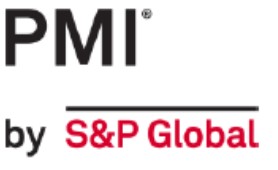The Global Purchasing Managers’ Index (PMI) for manufacturing produced by J P Morgan using the data from S&P Global ticked up to 49.1 in September but is below the crucial 50 level for the 13th month in a row (note that India and South Korea were not included in the calculation this month due to late publication). Output was negative for the 4th month in a row thanks to negative trends for the investment and intermediate goods groups that was only partly offset by growth for the consumer goods makers.
The manufacturing sector in the UK saw its PMI reading move up from the low point reached in August but this is where the good news ends; at 44.3 it remains very weak and, apart from that August figure, this is the lowest reading in the current run of 14 months of sub-50 figures. Output fell for the 7th month in a row and orders also continued to decline – new export orders fell for the 20th consecutive month as the UK manufacturing sector struggles with weak demand in key markets around the world, although the fall in September was slower than in August.
In the Euro-zone, the overall manufacturing PMI edged down a fraction to 43.4 but (and admittedly this is clutching at a whole bunch of straws) it is still above the low-point of 42.7 that we saw in July.
The only Euro-zone country with a PMI above 50 was Greece (50.3) despite it having the largest fall compared to August in this analysis; Italy, Spain and Germany saw an improvement compared to their numbers from the previous month but the latter, along with Austria (which was lower than in August) have the lowest PMI reading in this report at 39.6. France, Netherlands and Ireland (the latter moving it from growth to decline) also saw their PMI lower in September.
Elsewhere in the European Union, the picture is equally gloomy with the other 4 countries that have a PMI survey all well below the crucial 50 level; Poland (43.9) and Hungary (47.4) managed a higher reading than they did in August but Czechia (41.7) and Sweden (43.3) were lower. Finally in this part of the world, the PMI for Turkey (49.6) moved up a little and Switzerland, despite having the largest improvement in our report compared to the August figure (it was 5.0 points higher) is still firmly in negative territory at 44.9.
In Asia, we have the only other countries to have a positive PMI reading in September in China (50.6) and the current global star of India (57.5) although both of these had a lower index than in August; this direction of change was shared by Japan (48.5) and the ASEAN region (49.6) with the latter seeing its first negative PMI since August 2021. Taiwan (46.4) was the only Asian country to see an improvement in the manufacturing PMI – at the time of writing this article, the figures for South Korea were not available (they will have been published by the time you read this).
As hinted above, all five countries that we cover in the Americas have a manufacturing PMI below 50, albeit with a mix of trends compared to August. Brazil, Canada and Mexico all recorded a lower reading in September – for the first of these it moved down from a fraction over 50 – while Columbia and the USA had a higher number than in August.
In summary then, across the 27 countries/regions that we cover in this analysis (excluding the global total), only 3 have manufacturing PMI readings above 50 (there were 7 in August) which, despite the overall global average edging up, points to a generally weak picture almost everywhere in the world.
The individual S&P Global PMI reports are available to download on their web-site at https://www.pmi.spglobal.com/Public/Release/PressReleases but we also have a summary charts report which is attached below. You should note that the PMI readings for Hungary, Sweden and Switzerland are not compiled by S&P Global but can be found with an appropriate internet search (it also means that they are not part of the global PMI calculation).

